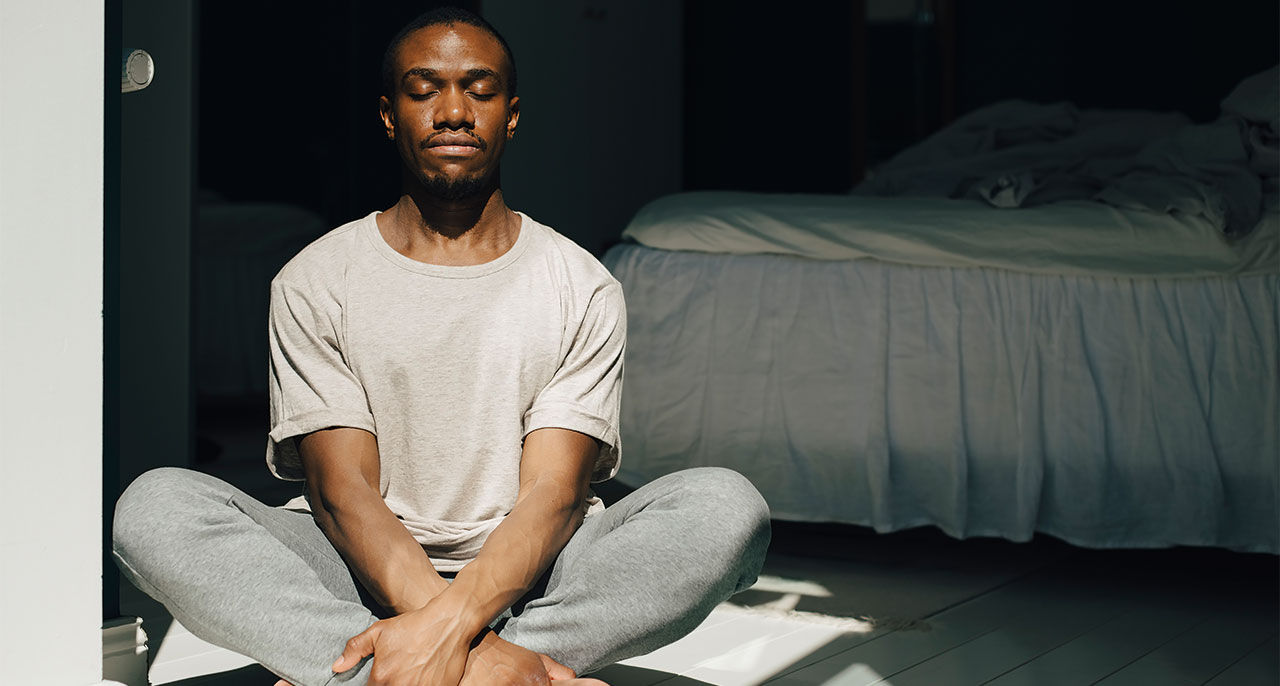Blissful. Peaceful. Tranquil. With good reason, these are all words that have been used to describe aspects of right concentration, the final step on the noble eightfold path. When we practice right concentration, we cultivate a clarity of awareness that weakens our mental hindrances, calms the mind, and allows us to perceive experience more clearly. Essentially, right concentration is what we practice when we do certain forms of meditation, and it’s also the culmination of all the factors on the path.
“Right” is a translation of the Pali word samma, which has connotations of thorough, harmonious, and complete. And “concentration” comes from samadhi, which implies collectedness, calm, and unification. So, when we practice right concentration, we’re practicing bringing the mind in harmony with the other aspects of the noble eightfold path.
This alignment is important, as all factors of the path support and rely on one another. It’s like setting up all the pieces in a line of dominoes or arranging all the pieces of a puzzle. Right concentration depends on every other factor of the path.
So how exactly do we practice right concentration? In brief, we want to weaken the hindrances by stilling the mind. Those hindrances are greed, ill will, restlessness, dullness, and confusion. When the hindrances fade away, it’s like a haze clears from our vision, and we come closer to yathabhuta, “the truth of things.”
At the heart of concentration meditation is the practice of letting go—letting go of the chatter and cloudiness of the mind—so that it can come to rest. That’s why breath meditation is such a helpful method. In that practice, we allow the mind to relax around the breath, which creates stillness and peace. That stillness then naturally develops into a clear and concentrated awareness.
Stillness matters when we practice concentration formally, so does alertness and awareness. “Awareness of what?” you might ask. The mind, the breath—whatever is moving through your practice at the moment that you can watch, and then let go. Imagine the surface of a lake becoming clearer as the waves come to rest. When the murky waters clarify, we can begin to see more clearly.
There are several methods, and there are scores of books and talks and articles on the “correct” method, but the best method is one that works for you. The key is in showing up for yourself, gently and consistently, and asking for guidance and support from trusted meditators.
This is where some may wonder about the difference between right mindfulness and right concentration, as both involve meditation. They are indeed quite similar. Both involve harnessing awareness to notice how the mind moves, but there are key differences. Right mindfulness involves a broad investigation of experience through body and mind in many circumstances, and it can be very active in a mental sense and even physically. One may be mindful of sensations, thoughts, emotions, or even concepts. On the other hand, right concentration involves an alert but calm awareness aimed specifically at reducing the hindrances and clearing the mind. Of course, as meditation is quite personal, it’s always recommended to find a good teacher or mentor with whom to check in and fine-tune the details.
It’s also true that the distinctions between the factors on the path are somewhat beside the point. As previously mentioned, each segment in the matrix of the noble eightfold path supports and strengthens the other. Thus, if you’re practicing mindfulness, you’ll be supporting concentration and vice versa.
Perhaps more important than formal practice is what we do off the cushion. This is why all aspects of the eightfold path are important. Commit first and foremost to right view and right intention—living a life of generosity, kindness, and discernment—then work on developing the other parts of the path.
Right concentration will come more readily if you’re living a quiet, uncomplicated life, as you have less wrangling to do when you sit on the cushion. The mind is already aligned with the purpose of your meditation, with the path, and has less of the chatter that normally accompanies a busy, restless day. This is why retreats and monasteries are so suitable to the practice of concentration.
Now, you shouldn’t wait to cultivate concentration until conditions are ideal; you could be waiting forever. So, do what you can to make space for quiet in your day and practice the factors of the path in tandem. In other words, start where you are and start small, and before you realize it, you’ll find yourself prepared for when more suitable conditions arise.
Practicing in this way changes you. One early Buddhist text gives this analogy: Over time, a carpenter’s saw handle is worn down from use. After just one day of use, it might look like nothing has been worn away, but signs of use become clear as time passes. It’s our day-after-day dedication to practice that allows for progress.
Over time, our practice breaks the stranglehold of the hindrances, and the mind becomes lighter, brighter, and stronger. It may not even be something you notice until you find that usual challenges and difficulties become more manageable or even disappear entirely. A mind at ease is quite peaceful, and that peace in turn allows for concentration. It’s all connected.
In the end, the best concentration practitioners take the practice seriously—and also not. It’s a bit of a paradox, but what I mean is that they diligently create supportive conditions for practice, and then they just allow the practice to happen.
This is not unlike gardening. We prepare the environment, gather the essential supplies, and plant our vegetables according to our plan. If we have the soil, water, sunlight, and essential nutrients, all we must do is observe and nurture. Then, one day, probably when we least expect it, our seeds—our practice—will sprout.

